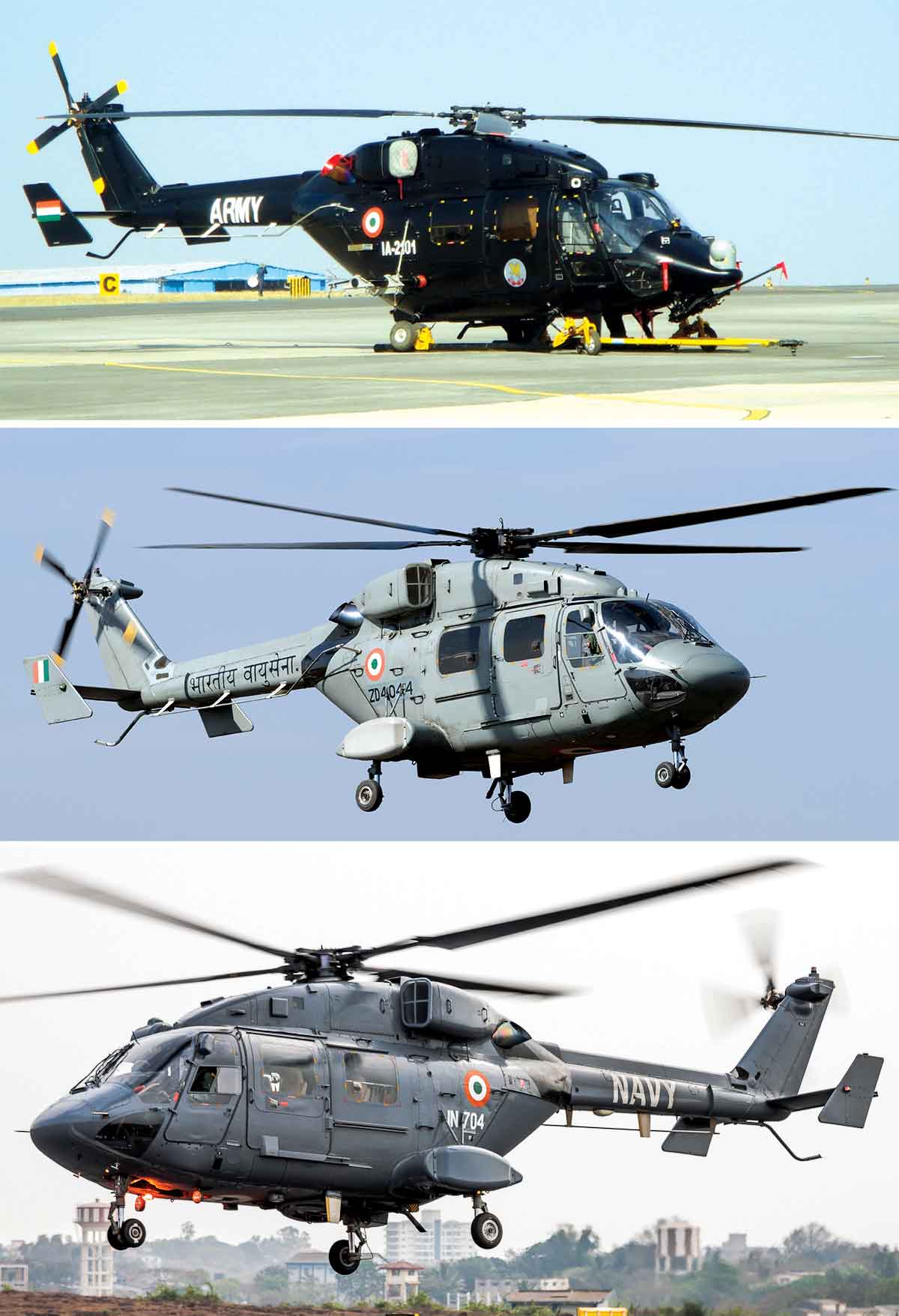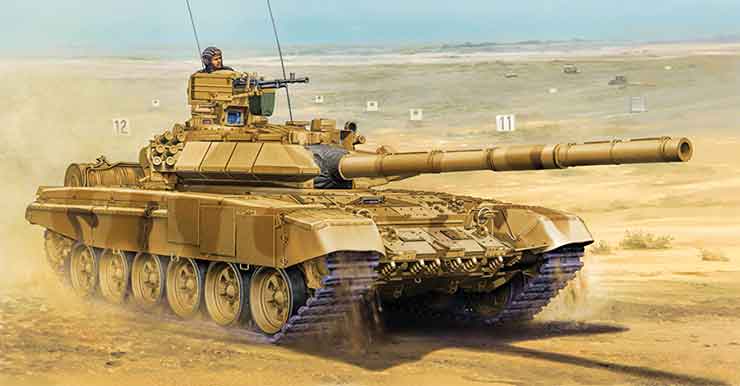MEGATRENDS: Certain discernible megatrends are impacting the Defence, Security and Disaster Management firmament. The first is that there is a growing shift in global economic power from West to East. Secondly, the rate of demographic changes taking place all over the world due to migration and varying birth rates is giving rise to new conflicts. It triggers a further demographic change-conflict cycle. Thirdly, rapid urbanisation fuelled by growth is creating social tension and conflicts. Fourthly, new technologies are changing/driving the nature of conflicts. Lastly, climate change and resource scarcity give a whole new dimension to conflict. It has succeeded in bringing disaster management on par with security.
Recent events are proving that disasters happen with greater frequency than wars. Hence militaries and societies are preparing accordingly. Largely, the response mechanism and capabilities required for conflicts and disaster are virtually the same and can no more be developed separately. These megatrends are driving a change which opens opportunities for India in becoming a hub of the Defence, Aerospace and Disaster Management industry.
SHIFT IN CONFLICT ZONES
The Industrial Revolution gave rise to massive growth in Western Economies. This growth has fueled conflict. The last century was hence dominated by the two world wars and the cold war which took place largely over the European and North African continents between developed Western powers. Weapons were designed and developed for those theatres and battlefield conditions. Resultantly European nations and the US became the hubs for the global defence and security industry. Conflict Zones of this century are West Asia, South Asia, Central Africa, East Asia-Pacific and Indian Ocean Region (IOR).

In addition, nature of conflict has changed. There is a discernible shift from the conventional warfare of the last century to the hybrid and humanised conflicts of this century. This is being complicated by the impact of disruptive technologies which are sprouting like never before. The defence industry must respond accordingly and be rooted to the ground on which conflicts are raging. In this context India must be central to the new conflict zones in more ways than one.
DISASTER ZONES
Major earthquakes of this century have occurred in Gujarat (2001), Iran (2003), Indonesia (2004 Tsunami), Pakistan (2005), Sichuan (2008), Haiti (2010), Japan (2011), Christchurch (2011) and Nepal (2015). Devastating floods/ hurricanes have occurred in the US (2005), Myanmar (2008) and Thailand (2011). An analysis of disaster zones indicates that the bulk of the major earthquakes and floods have happened in and around Asia with India as the geographic centre.
In many cases India has been among the first responders due to its centrality. Very importantly, these disasters have occurred at a rate greater than those at which conflicts have taken place and with far greater devastation. In such conditions, India has the best potential to develop as a major Disaster Management hub. India’s development as a Disaster Management hub with a view of creating capability to combat disasters in the neighbouring countries and creating dependencies will only increase its soft power. The potential is immense.
THE INDIAN TRENDLINE
India is a growing power. Its GDP is predicted to shortly overtake that of Great Britain. By 2050 it is expected that its GDP will be third behind the US and China. As a growing power it has huge domestic demands of defence, aerospace and disaster management equipment. The demand straddles capital as well as revenue channels. As of now the country is a net major importer of defence equipment. Increasingly procurements from foreign sources have bedeviled the establishment and putting big ticket items through is being thwarted due to one reason or the other.

Public pressure to indigenise is growing. Hence the story is set to change. Imports are being actively discouraged. Governmental policy is to turn India into a net exporter. The Make in India initiative might not have succeeded but the drift towards self-sufficiency is clear with a lucid understanding that India must increase exports in this field. As Conflict Zones have shifted to the East, big spenders have also emerged here. Currently big defence spenders include West Asian countries, Central African countries, Singapore, Iran, Indonesia, Taiwan, Australia and Japan. These are countries with which we have excellent relations and this potential and goodwill needs to be tapped.
IMPACT OF DISRUPTIVE TECHNOLOGIES
The last generation of military grew in an era of Revolution in Military Affairs (RMA). However, technologies like Internet of Things (IoT), Artificial Intelligence (AI), Space Colonisation, 3D Printing, High Speed Travel, Robotics, Blockchain Technology, Autonomous Vehicles, Advanced Virtual Reality, Renewable Energy, Propulsion Technology, Sensor Technology, Digital Revolution, Energy Harnessing and Direction, Navigational Aids and New Material Technology are disrupting everyday life. These have tremendous dual use potential. However, these disruptive technologies are leading to Disruption in Military Affairs (DMA). Their impact will change the way conflicts or disasters will be handled. That is a given. However, the issue must be looked at differently. The brick and mortar defence industry as we know it is being impacted by disruptive technologies.
A hybrid form of defence and aerospace industry is emerging with a heavy bias on digital software and disruptive technologies. Every technology has a dual use. For example, the aerospace industry in India must cater for Military Aircraft, Helicopters, Unmanned Aerial Vehicles (UAVs), Missiles, Rockets and Spacecraft. In addition, it is estimated that Indian requirement of passenger aircraft is growing at a dizzy 15 per cent. It translates into a need of 1000 civil aircraft in the next seven to eight years. That is the potential for a new frontier of defence and aerospace industrialisation. Look at it differently. Almost 50 per cent of Microsoft and Google products are based on research from their India centric operations. It highlights India’s ability in latest and potentially Disruptive Technologies. If this logic is extended further India’s digital software potential and industrialisation make it an attractive proposition as a future defence, aerospace and disaster management hub.
TRANSLATING POTENTIAL INTO REALITY
There is no doubt that India has best credentials and great potential to be the next hub for the Defence, Aerospace and Disaster Management industry. However, this is easier said than done. Deliberate steps must be taken to ensure that this potential turns into reality. The first step in this process is to accept this thought process and develop a vision and policy for realisation. The outlines of such a thought and action process are outlined below:

Defence Acquisition Reforms. Defence acquisition processes have missed laid down benchmarks repeatedly. Politicking and bureaucratic hurdles have imposed slowdowns and delays on the system. The entire defence acquisition process must be reformed with purpose. Hitherto our attempts at reform have been largely cosmetic and ineffective. It must be realised that defence acquisition in requisite numbers and correct time have tremendous payoffs. It meets out burgeoning requirements, cuts costs and inspires confidence for investment and export. Till such time there is an assured market, there will be no investment or possibility of export.
Investment in Research. Indian investment in research is narrow in bandwidth and financially meager too. We need to expand our research bubble by going beyond Defence Research and Development Organisation (DRDO). India has a wide scientific base. This needs to be exploited and synergised with defence requirements. The potential of our Indian Institutes of Technology (IITs) and other excellent academic institutions must be tapped. The areas of research have also to be expanded. New technologies must be explored. We must master the disruptive technologies on the horizon. Otherwise our young minds will start working for others. We will end up in a situation where we buy defence items developed by our minds from outsiders! Budget outlays for focused outcome-based research into new technologies must be enhanced. These outlays need to be channeled into the wider stream of technological dual-purpose enhancement rather than for defence purposes only.
Incentivise Private Players. Private investment whether indigenous or global must be incentivised. The effort in establishment of Defence Corridors or investment conclaves like the one being done by Tamil Nadu are a good start point in incentivisation. Startups need to be encouraged and incubated to grow. The real incentivisation will come when markets are assured. The other area where incentivisation is feasible is in easing rules and regulations and providing a level playing field for private players vis-a-vis public industry. Presently there is too much bias to support the public enterprises to the extent of a monopolistic situation. This scares private investment off.

Reform Public Players. Reform of our Defence Public Sector Units (DPSUs) and Ordnance Factory Board (OFB) factories is a must if India is to be a global defence hub. Reform of the public institutions must be focused on modernisation, technological upgrade, improving quality, increasing efficiencies and ensuring delivery on time. The umbilical of assured orders irrespective of all other considerations must be seriously reviewed. They must be shaken out of their comfort zones. Tremendous capacities have been created at great public cost. They must be made to deliver. We need a strong government with a clear-headed capable leader at the helm to achieve this objective.
CONCLUSION
All pointers indicate that India must be the global hub of Defence, Aerospace and Disaster Management industry. India has the best credentials and potential to be one as the global shift takes place to the East. Equally, India must surmount multiple challenges and hurdles in case it is to emerge as a global hub of consequence. Notwithstanding detractors and pessimistic views as India’s power grows, certain reforms will take place which will ensure that India realises its potential. That is the hope. However fond it is.
The author is a retired Director General of Artillery, Indian Army and Professor of Aerospace Department, IIT Madras





